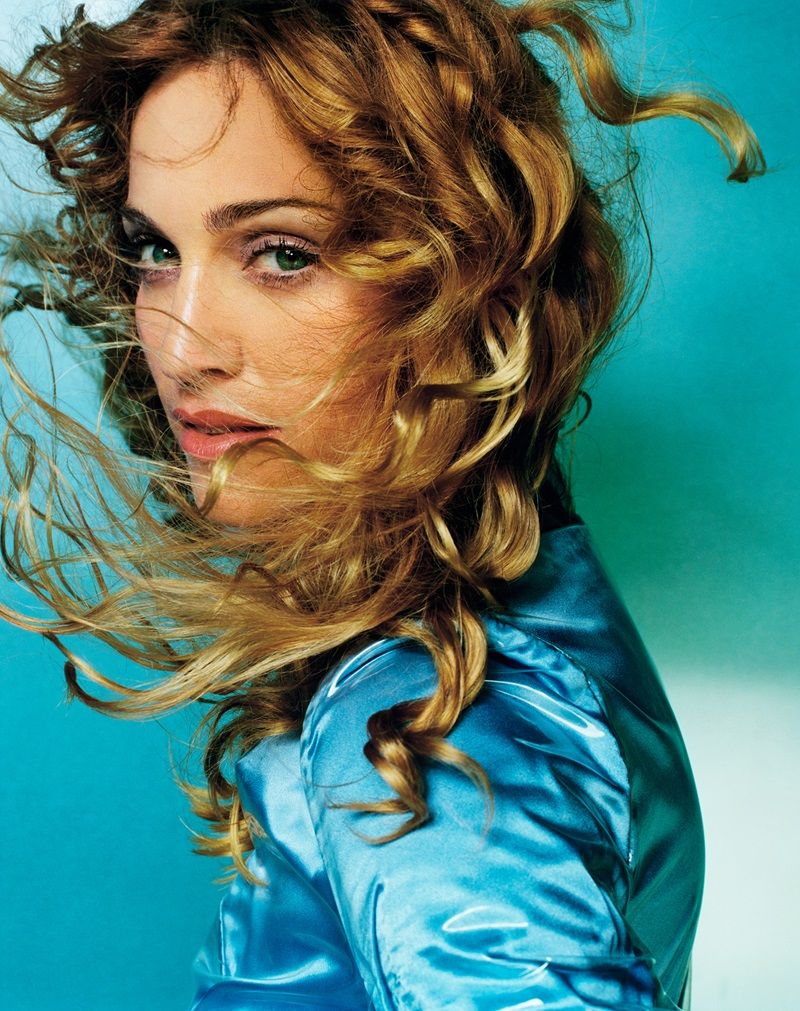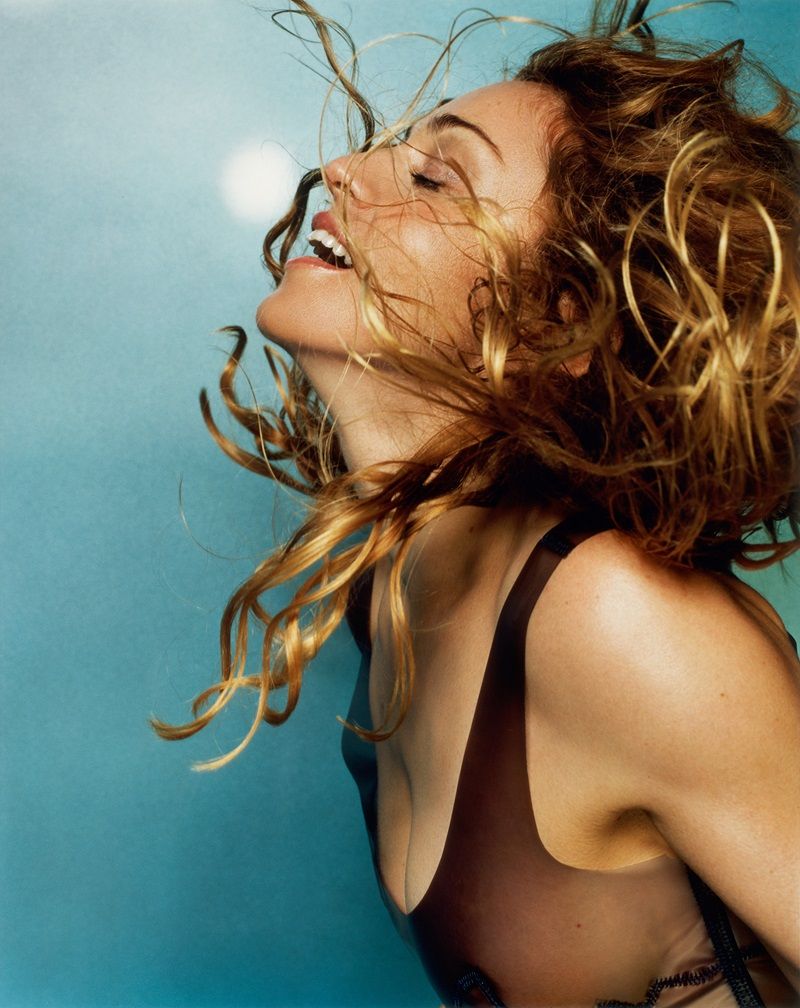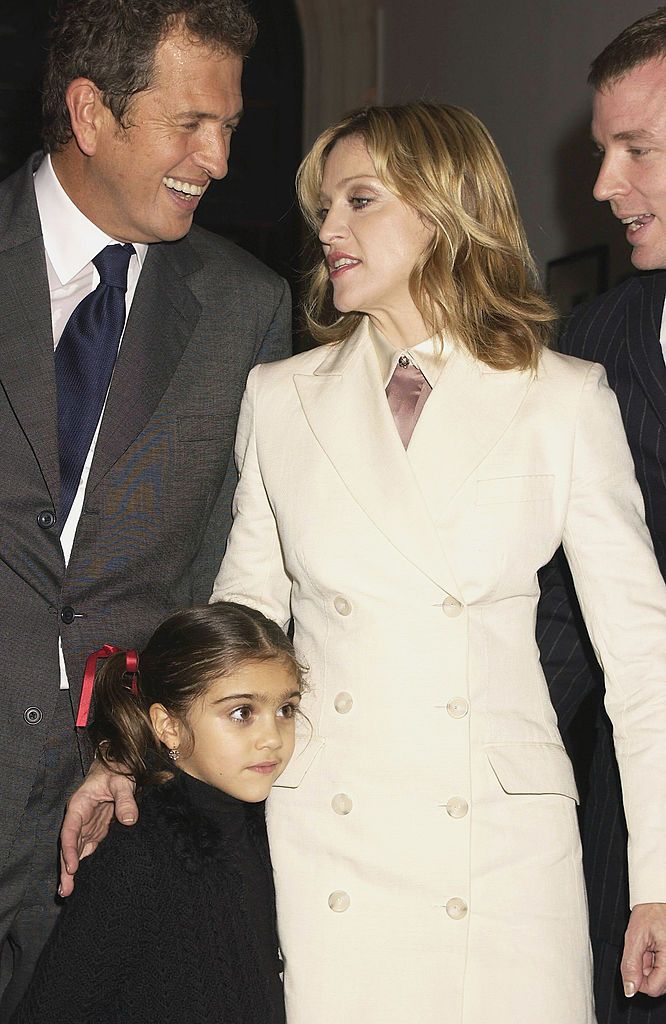Exclusive interview with Mario Testino: "That time in Miami with Madonna, shooting Ray of Light"


The cover photograph of Madonna's album Ray of Light (1998). © Mario Testino
RAY OF LIGHT is the album with which Madonna rewrote her identity in the late 1990s. Thirteen tracks that abandon the exploration of sexual pleasure, a primary theme for the singer, which until then had been used as a pin to poke at mass morality.
With the release of Ray of Light in 1998, Madonna abandoned the centrality of the flesh. Raunchy eroticism was overcome. Instead, the focus shifted to an existential quest and a commitment to the sanctification of the spirit.
Indeed, each track on Ray of Light is an anamnesis of primal feelings: those generated and degenerated within the closest emotional circle. Here, Madonna coexists as daughter, mother, lover, and fan of God , the latter understood as an indefinite but absolute driving force. Madonna summarizes experiences of love or the ardent spiritual search, made manifest on the album by pressing, syncopated, and hypnotic electronic instruments.
The photo used as the album cover features the pop star as a third element: the other two are wind and light. That shot by Mario Testino became an epochal image, one of the most iconic portraits in pop history. For both Madonna and the Peruvian photographer, that shoot represented a transition and a happy rebirth.
And on that occasion fashion, photography and music blend into a single product.

Image from the Ray of Light shooting. © Mario Testino
On the occasion of the release of Veronica Electronica , the collection of remixes and unreleased tracks from Ray of Light , out on July 25th, we interviewed Mario Testino exclusively to find out the genesis of that image that has gone down in history.
Where did the photographic imagery of Ray of Light come from ?
I first met Madonna in 1997, when she asked me to photograph her for a Versace couture campaign. That shoot went very well, and shortly afterward she contacted me to propose the cover of her new album. I remember she was very clear from the start: she wanted something honest ; something that reflected who she was at that moment. She wanted to be more herself than a constructed character.
What were your references?
We'd thought about shooting in the studio. I remember the pale blue Dolce & Gabbana trench coat was already part of the initial vision. That piece had a shiny, almost liquid quality, which made it futuristic and radiant. For Ray of Light, I proposed the idea of wind and sunlight ; we wanted to convey a sense of freedom. In fact, we then shot in Miami, chasing that light, both literally and symbolically. It was perfect.
The trench coat's material reflected the light beautifully and added luminosity to the images. It helped create the sense of radiance we were looking for; an aura that reinforced the album's title and mood.
Why did Madonna want her to shoot that project?
Madonna has a great instinct for recognizing emerging talent. At that time, I had a good reputation as a fashion photographer. The Gucci campaigns had given me a certain visual language, which obviously made sense for what she was looking for.
We worked well together during the Versace shoot, and she invited me to do this second project. When you allow a certain creative relationship to mature, it's highly possible to achieve a surprising result. And she's always been courageous in exploring new terrain. One of the hardest things in creative work is finding someone to collaborate with and being amazed by the result.

Mario Testino with Madonna, accompanied by her daughter Lourdes and Guy Ritchie, at the Mario Testino exhibition at the National Portrait Gallery in London in 2002. (Photo Getty)
The images of Ray of Light marked a radical change for Madonna, but also for her photography.
Yes. It was truly a defining moment for me too. It not only marked my entry into the world of music, but also into celebrity portraiture more generally. Until then, I had worked primarily in fashion, but Ray of Light allowed me to show another side of my photography. With Madonna, I wanted to capture her strength , something that often doesn't emerge unless you meet her in person. She has an incredible fire, and I wanted the images to reflect that intensity, while remaining intimate and real. When photographing a model, you often create a character or an interpretative narrative. A performer, especially like Madonna, already has a developed identity, a look, and a specific body language. The challenge is to understand her point of view and then interpret it with your own gaze, merging both visions authentically.
Did the concept of “light” also influence your photographic choices?
Absolutely. Light was central to the project. I wanted her to be free and spontaneous, like a ray of light: something that moves where it wants and brings energy wherever it lands . Technically, I used a full, frontal light to illuminate her face and highlight her natural beauty. But there was also a symbolic clarity: no shadows, no distractions.
Where does the essential aesthetic of the shoot come from?
Of course. The goal was to make the images look almost casual. Of course, there's a lot of thought and work behind it, but the illusion of simplicity is the result of precision. For me, the most powerful photos are those that don't look overly constructed . When the subject is powerful, and Madonna undoubtedly is, there's no need to overdo the stylization. Just leave her space to dominate the image.
Ray of Light marked the beginning of a new chapter for me. Around the same time, I also photographed Princess Diana; from there, too, you can sense that I was gradually becoming more and more interested in peeling back layers and removing what defines a person from a media perspective. I tried to bring out the person in the purest way possible . Clothes can help, but they must never obscure the subject.
Can photography broaden or redefine the perception of music?
Absolutely. The more senses you can engage, the deeper the emotional impact. The image can transport you. It frames the music, creates an atmosphere , and creates a lasting memory . You hear a song and immediately recall that image. The connection between visual and audio is incredibly powerful.
How did the final shot come about?
He experiences fashion from the inside.

Around noon, after a very productive morning, Madonna said that was enough for her. But I still felt I didn't have the image I wanted; the one that could truly become a Madonna album cover. So I asked her to continue shooting after lunch. Thankfully, she agreed. The final image came from that afternoon session. It was an important reminder: trust your instincts as a photographer and don't stop until you've captured what you're looking for. You know when the shot is right. And I hadn't yet. Then, suddenly, it came.
corriere





